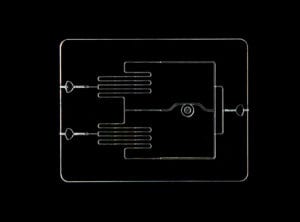Using Microfluidics to Solve Climate Change Problems
As Earth Day approaches we want to take time to reflect on how technological innovation has always been at the forefront when it comes to battling the effects of climate change. Creative thinkers in science and engineering have tackled the world’s problems and turned them into innovative solutions.
Today, our climate change issues are most likely going to be addressed, and solved, by successfully harnesing new technologies and processes that combine existing tools in novel ways. Problems facing our earth today require a concentrated effort and multiple steps along the way to see a viable result.
It is here where microfluidics can help lead the charge. Microfluidics is an emerging technology that is being used in a variety of industries and methodologies. Here a few examples of how microfluidics, at its small size and affordable pricing, are helping solve today’s ecological crises.
Microfluidics and BioFuel
The limitations of fossil fuels are well documented. There is a finite supply, carbon emissions, price fluctuations, and supply upheavals due to political instability. Luckily renewable resources of fuel from plants, known as BioFuel, are gaining traction as an affordable energy alternative to replace petroleum-based products.
New research utilizing green sources like Algae that are rich in high-energy lipids have made significant progress toward producing alternative biofuels. Yet, lipid density can be too low compared with what is required to ensure production that can compete cost-effectively with fossil fuels. Microfluidic technology is being used to identify best strains of Algae for the application, as well as to develop optimal production methods to boost lipid measurements.
Along these lines, microfluidic devices are used to monitor and blend biofuels, again to optimize production much like is done in the petroleum industry. Manufacturing is not a simple process and whether green or not, creation of a new product requires multiple steps to achieve good quality at competitive costs.
Microfluidics and CO2 Capture-Sequestration
The rapid increase in carbon dioxide in the atmosphere must be curbed in order to stop climate change. It will take more than simply switching away from fossil fuels for cars and planes.
CO2 is created by a multitude of processes, and the Greenhouse Gas that is already in the atmosphere does not disappear over time. Research into capturing and then storing carbon dioxide in a safer location such as inside the Earth or under the sea requires simulation of the processes as well as identification of material components.
Microfluidic devices have been instrumental in the development of CO2 Capture-Sequestration solutions to the problem. In some cases labs are experimenting with conversion of the problem gas to another form of fuel.

